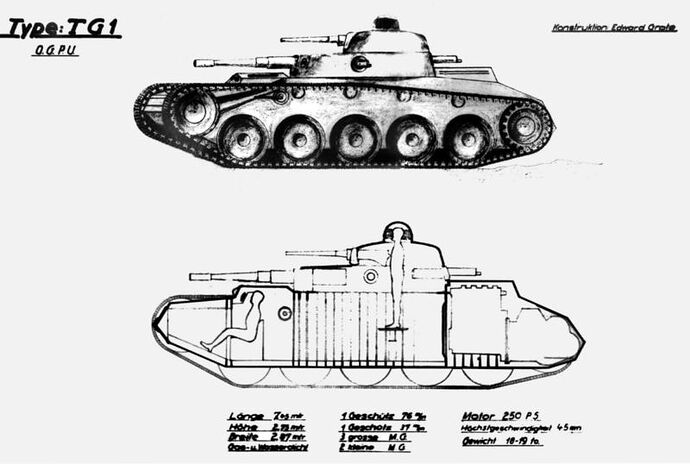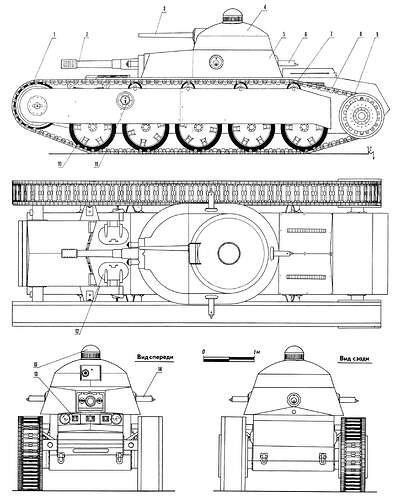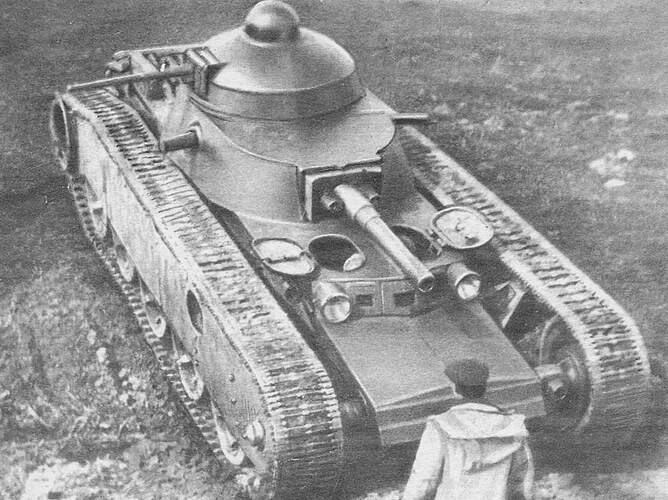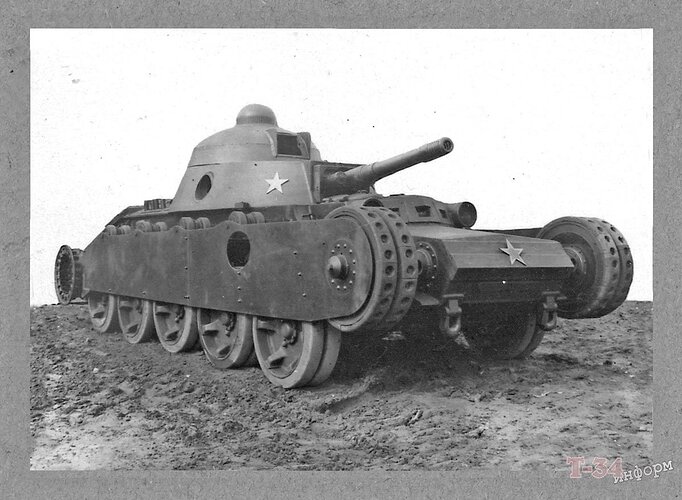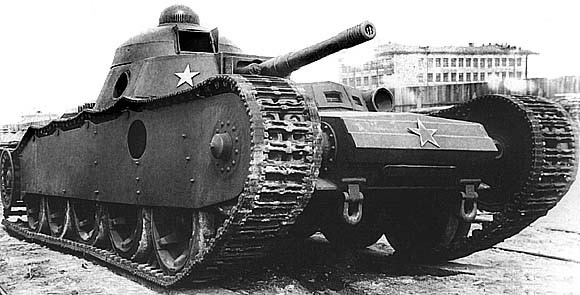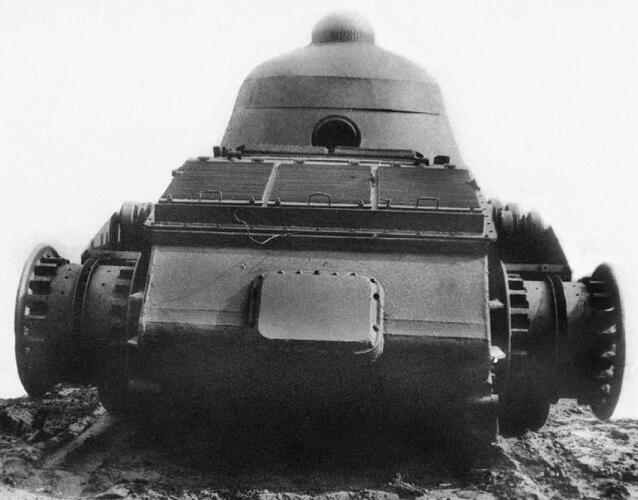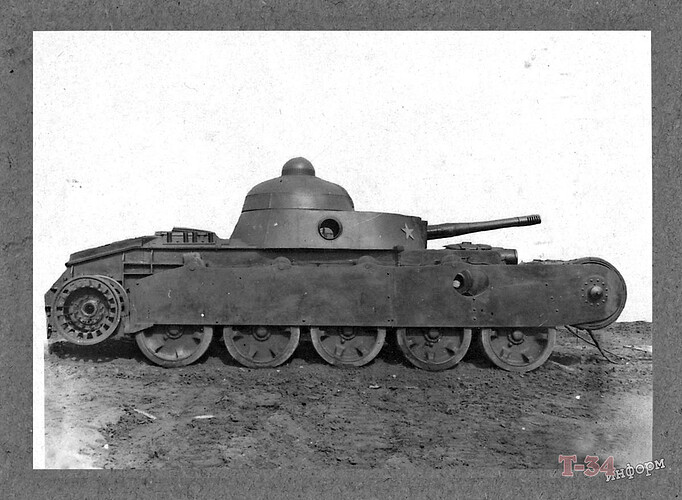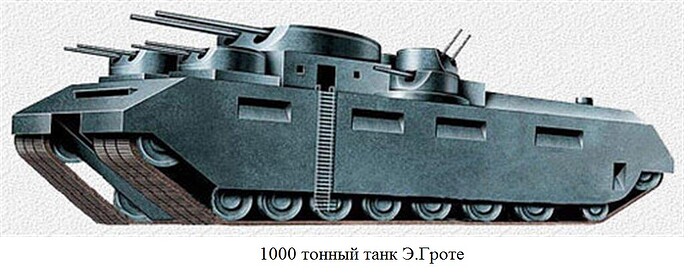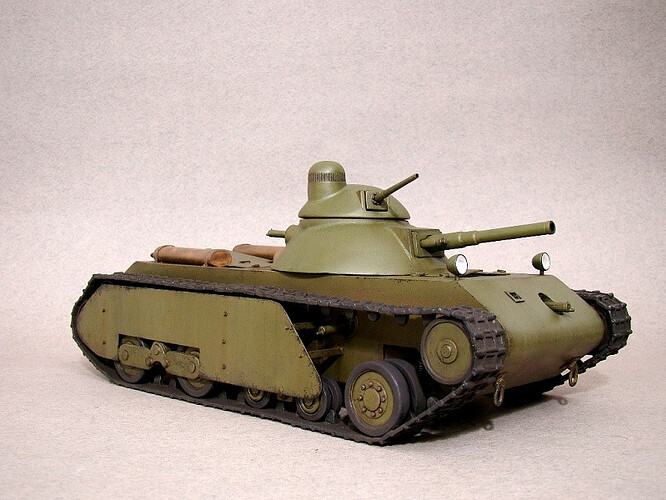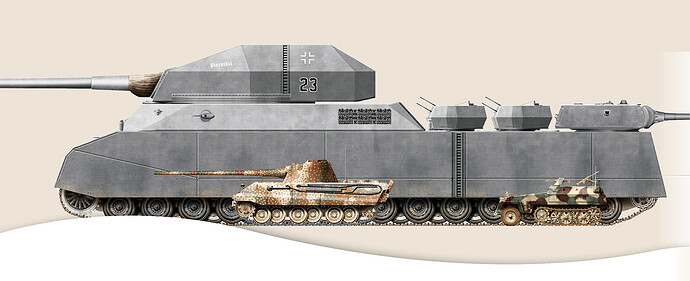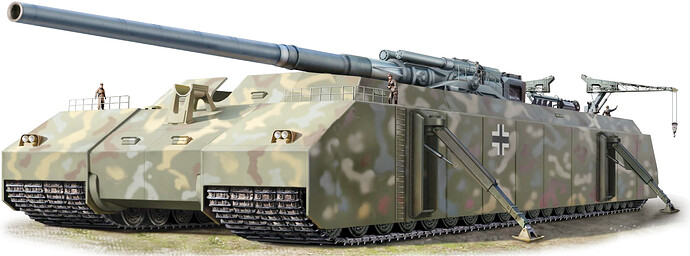Introduction
From the second half of the 1920s until Hitler came to power in 1933, the USSR actively cooperated with Germany in the military sphere. Work was carried out in many directions, one of which was the direct participation of German engineers in the creation of military equipment for our country.
In March 1930, a group of engineers from Germany headed by Edward Grote arrived in the Soviet Union and was assigned to lead the development of new promising tanks for the Red Army. The group was given a technical assignment to design a tank weighing 18-20 tons, with a speed of 35-40 km/h and 20 mm of armor. The armament was to consist of two guns of 76 and 37 mm calibers and five machine guns. The remaining parameters (placement and installation of weapons, ammunition, power reserve, etc.) were left to the discretion of the designer.
(The first author’s sketch of the tank)
At the Leningrad Bolshevik plant, a design bureau was formed, which included young Soviet specialists N. Barykov (later took direct part in the creation of the T-28, T-34, T-35, T-100 tanks) and L. Troyanov (B-4 howitzer, T-100, T-50, IS-2, IS-3, IS-4 tanks, multiple self-propelled guns before and during WWII), who later became prominent developers of domestic armored vehicles.
On April 22, 1930, several draft designs for a new tank were reviewed. The production of the tank, which received the index TG (sometimes the index TG-1 is also encountered), was carried out in deep secrecy.
Tank design
The TG tank differed from other domestic and foreign vehicles of that time not only in its general appearance, but also in its manufacturing technology and layout.
The tank had a fully welded hull. The frontal armor is three-layered and 44 mm thick in critical areas. The side armor is 20–24 mm, the floor and ceiling are 10–16 mm. The body is water- and gas-tight. The length of the tank is 7 m.
The armament was arranged in three tiers. A 37-mm cannon with anti-aircraft fire capability was installed in the upper rotating turret. A 76-mm tank cannon and three Maxim machine guns in ball mounts were located in the lower fixed conning tower. According to the design, this conning tower was also rotating, but due to the skewing of the ring, this became impossible and it was welded to the hull. Production vehicles would have had a rotating central cabin. Two DT machine guns with limited aiming angles were located in the sides of the hull (they fired through oval openings in the bulwarks).
The tank was controlled by pneumatic servo drives, and thanks to the presence of a special reverse mechanism, the TT could move forward and backward at the same speed. The gear shifting was smooth. There were no levers, as is usually the case in tanks. The control principle, in rough comparison, was similar to the control principle of a column on an airplane.
The tank’s crew of five could observe the battlefield through viewing slits and a strobe light mounted on the roof of the small turret.
The dependent suspension of the road wheels on spiral springs together with the semi-pneumatic tires of the “Elastic” type provided the tank with an extremely smooth ride. The track of the original design, made of stamped parts, had high resistance to tearing. It is interesting to note that all road wheels were equipped with brakes designed for emergency stopping of the tank in case of track breakage.
Result
Testing of the constructed TG prototype began on June 27, 1931 and continued intermittently until October 1. Due to the fact that the engine designed by Grote could not be manufactured on time, an M-6 aircraft engine was installed on the prototype.
The maximum speed of 34 km/h was achieved. The tank demonstrated good cross-country ability and maneuverability. The TG transmission proved itself in operation, being very durable and reliable.
Based on the test results, the following conclusion was made: “Consider that the TG tank in this form is a purely experimental type of tank, on which all mechanisms of practical interest should be tested in operation.” This conclusion followed, among other things, due to the extremely high cost, which amounted to 1.5 million rubles (for comparison: the BT-2 cost only 60 thousand rubles), the TG, even with the elimination of all the noted shortcomings, could not be accepted for serial production.
It was decided to refuse further services from Grote and he left for his homeland. But, apparently, before that he managed to propose a project for a TG-5 tank weighing over 1000 tons.
A completely Soviet design bureau worked in parallel and competitively with this tank. Their task was to improve Grote’s ideas in the direction of reducing the complexity and cost of the tank.
The designers chose an individual Christie spring suspension on five pairs of rollers, as well as a Christie-type ridge-type track.
Based on a number of criteria, preference was given to the five-turret T-35, and this project remained unrealized.
Afterword
In 1933, designer Grote returned to Germany to serve “the Fuhrer and the Fatherland.” On his drawing board were born the projects of monstrous tanks: the project of the thousand-ton P.1000 Ratte (“Rat”), proposed to Hitler in June 1942, with a turret mounting of 283-millimeter naval artillery guns of the same type as on the Scharnhorst-class battlecruisers,
(Landkreuzer P.1000 Ratte (Rat) compared to the E-50 medium tank and the Sd Kfz 251 half-track armored personnel carrier)
and closer to the end of the war - the project of the self-propelled gun Landkreuzer P.1500 Monster with an 807-mm “Dora” gun and a mass of one and a half thousand tons.
PS I wouldn’t have started this conversation if I didn’t have a model of this tank in my hands. But what’s the point of showing a model if no one knows anything about the prototype.
More about the model a little later.
